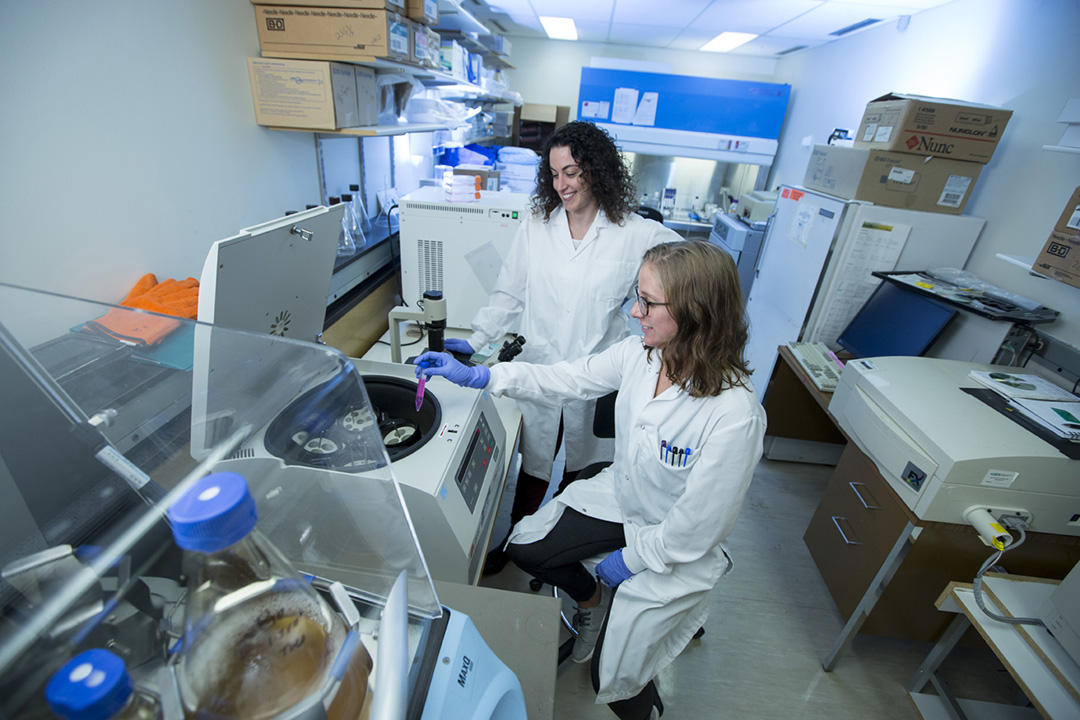
USask scientist boosting natural bodyguards against HIV
A Saskatchewan virologist has been awarded close to $900,000 to develop ways to fortify the body’s natural defences against HIV.
By RESEARCH PROFILE AND IMPACTSaskatchewan has the highest rates of HIV in Canada, with more than 2,000 cases reported between 1985 and 2016. There are currently 37 million people worldwide living with HIV/AIDS.
Linda Chelico, a virologist and biochemist at the University of Saskatchewan (USask), is leading an international research team working on how to boost the effectiveness of natural enzymes which are able to attack and destroy the HIV virus. The aim is to develop new therapies that will bolster the immune system’s natural weapons against HIV.
Chelico, has been awarded $864,450 by the Canadian Institutes of Health Research (CIHR) to examine how to support APOBEC proteins which work together to decommission viruses by mutating their genetic information.
“It really is like a war between the body’s defenders and HIV,” said Chelico. “We are trying to support the body’s defenders and their ability to decommission HIV naturally.”
The HIV virus is so powerful it is able to assault and destroy approximately 90 per cent of ABOBEC proteins, which sit in our immune cells like bodyguards.
Chelico is examining how to help the surviving ABOBEC proteins – some of which are wounded and not fully functioning. APOBEC survivors often regroup after an HIV attack and counterattack. They form a chain and bind together—like soldiers linking shields—and strike back.
There are 11 types of APOBEC enzymes in humans, four of which are more effective against the HIV virus.
In the five-year research program, Chelico will examine exactly how the proteins support each other and which combinations are most effective against HIV.
“We need to better understand how the body’s natural defenders against HIV work together and how they can survive attacks by HIV before we can move forward to create new therapies,” Chelico said.
HIV changes over time and integrates into a person’s genetic material, snipping the DNA and integrating into the immune cells. The virus can survive in the body for a person’s lifetime.
Chelico was brought up in Melfort, Sask., where her parents ran a restaurant and lounge. She attended USask and took a PhD in applied microbiology in 1999. At the University of Southern California she researched APOBEC proteins and made several novel contributions to their study.
But the beauty of the prairies beckoned—as did the high-tech health facilities at USask. In 2009, she moved back to take up a full-time position in the College of Medicine.
“The University of Saskatchewan was building a new Health Sciences Building. I thought that it would be great to be a part of this new initiative in Saskatchewan,” she said.
“To me, Saskatoon is an underappreciated city. We have everything that the big cities have, but it is much more accessible due to our population size. With the wonderful understated beauty of the Prairies that I grew to love since my youth, it wasn’t a tough sell to come back.”

